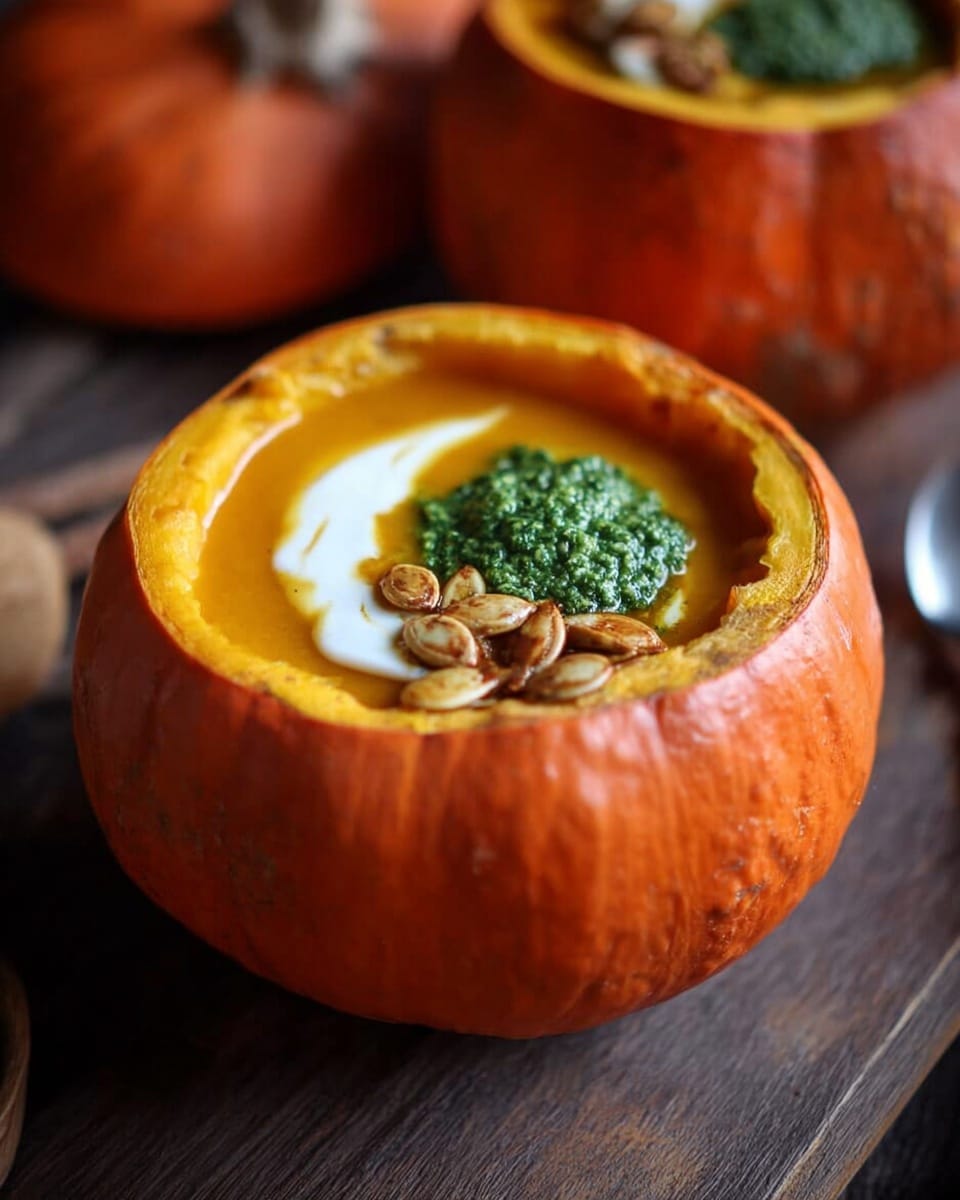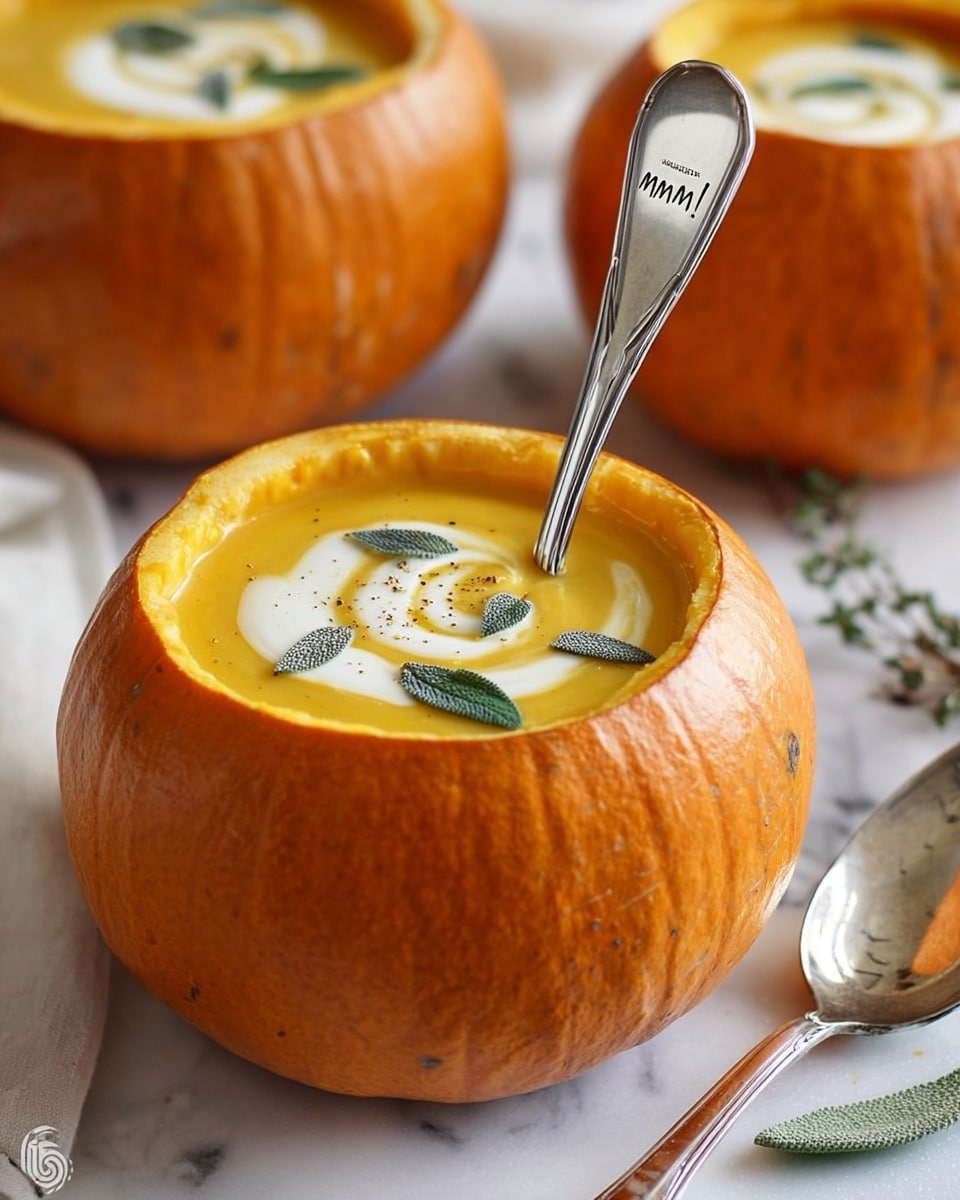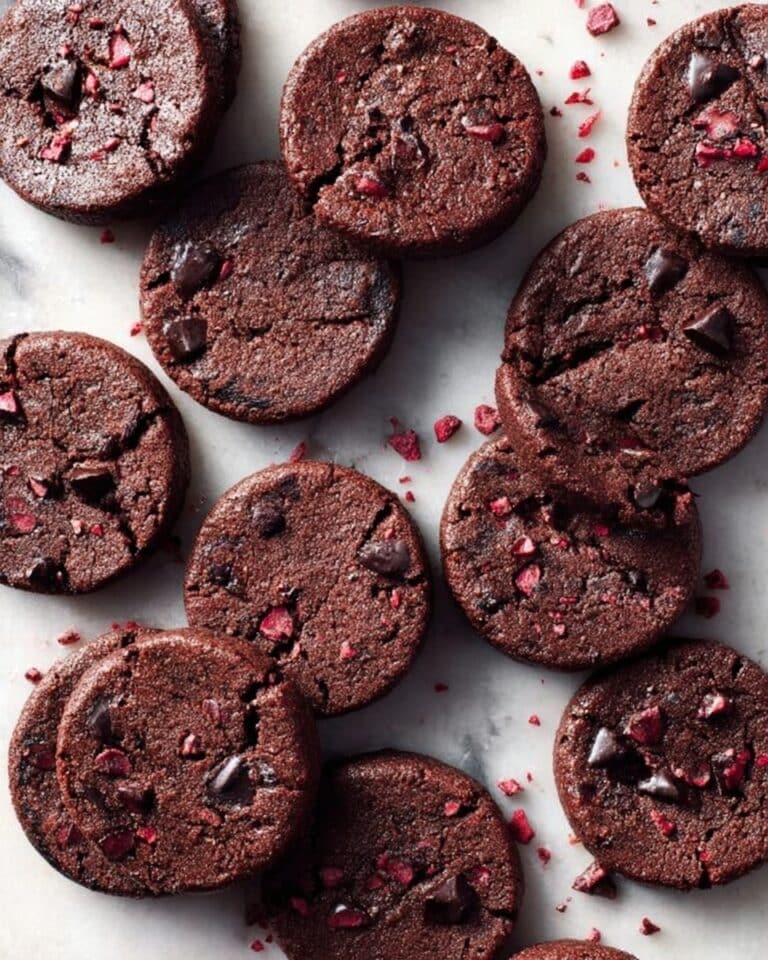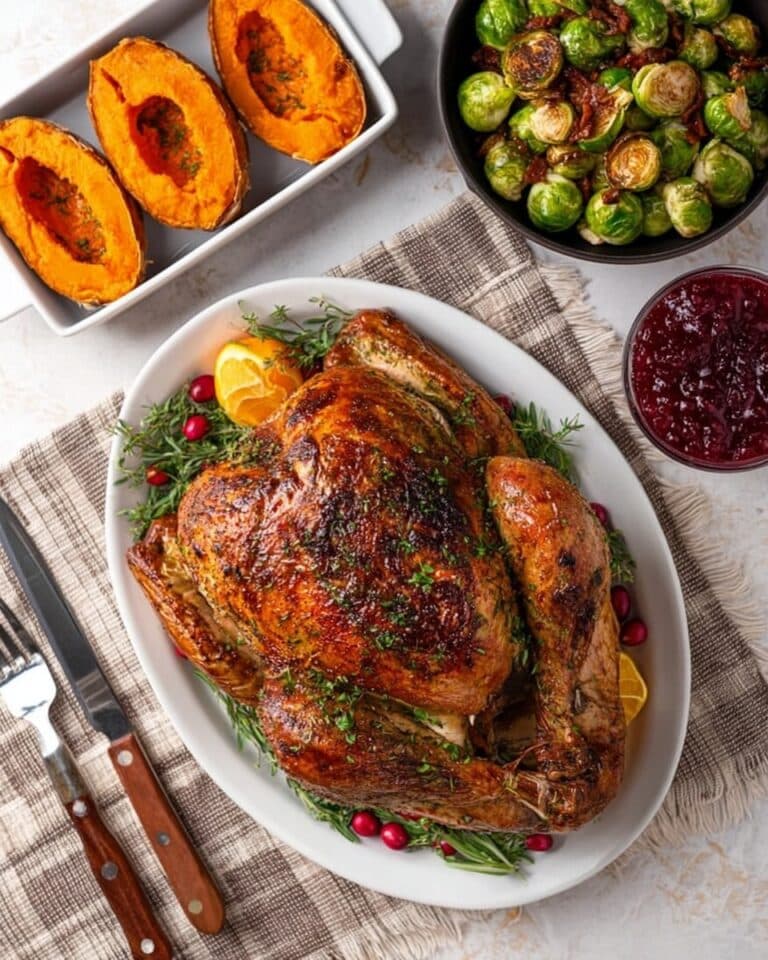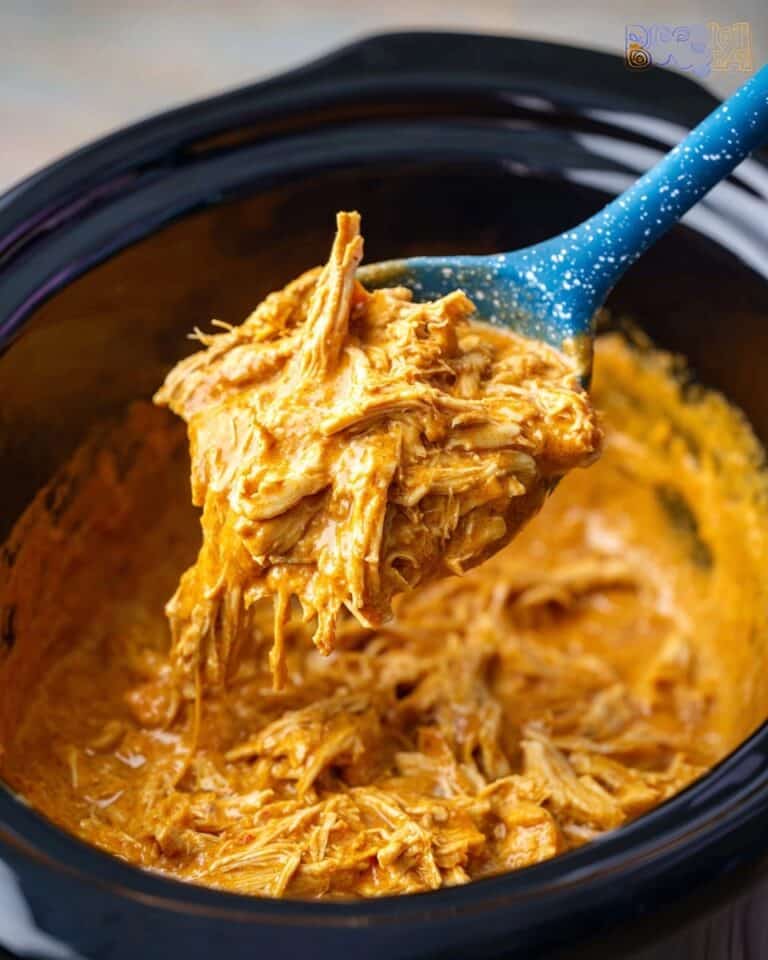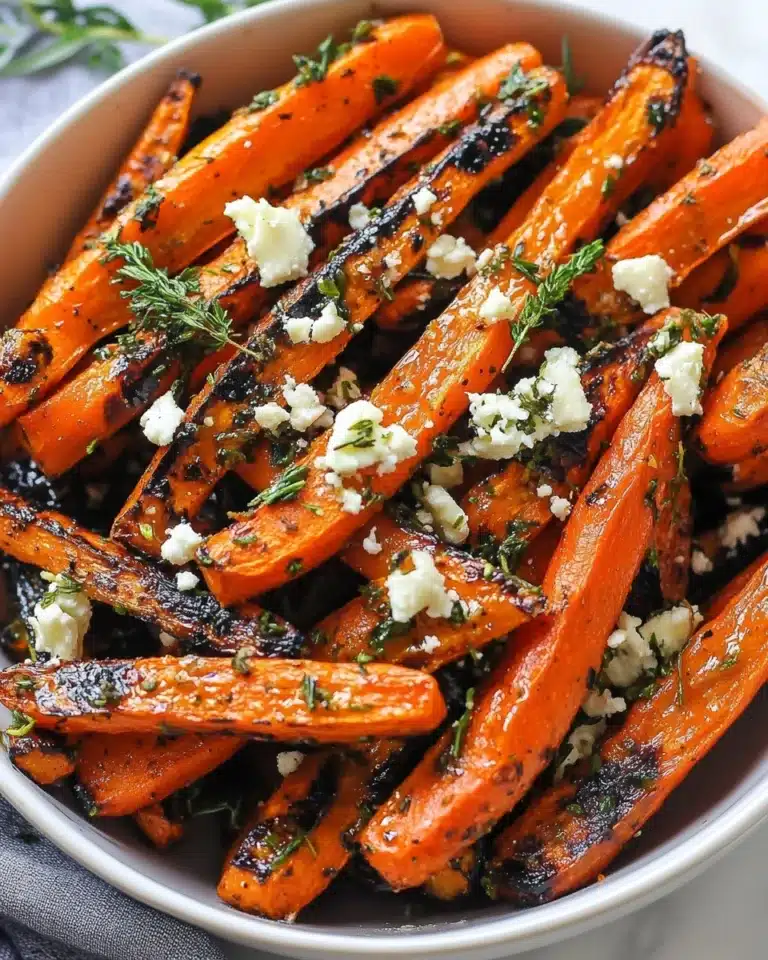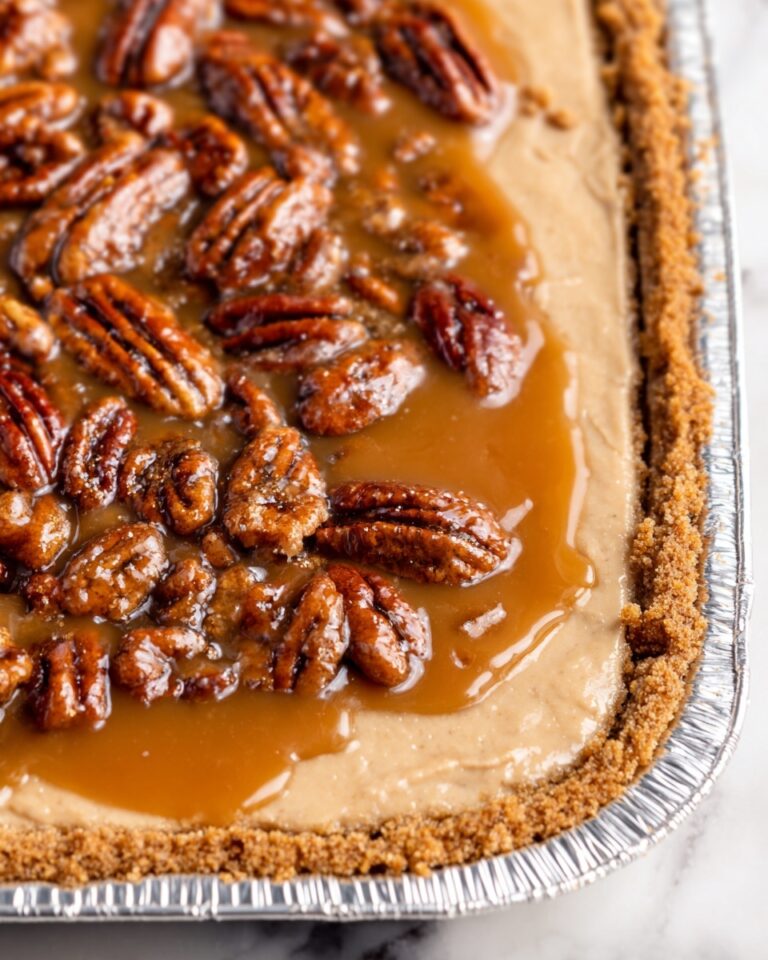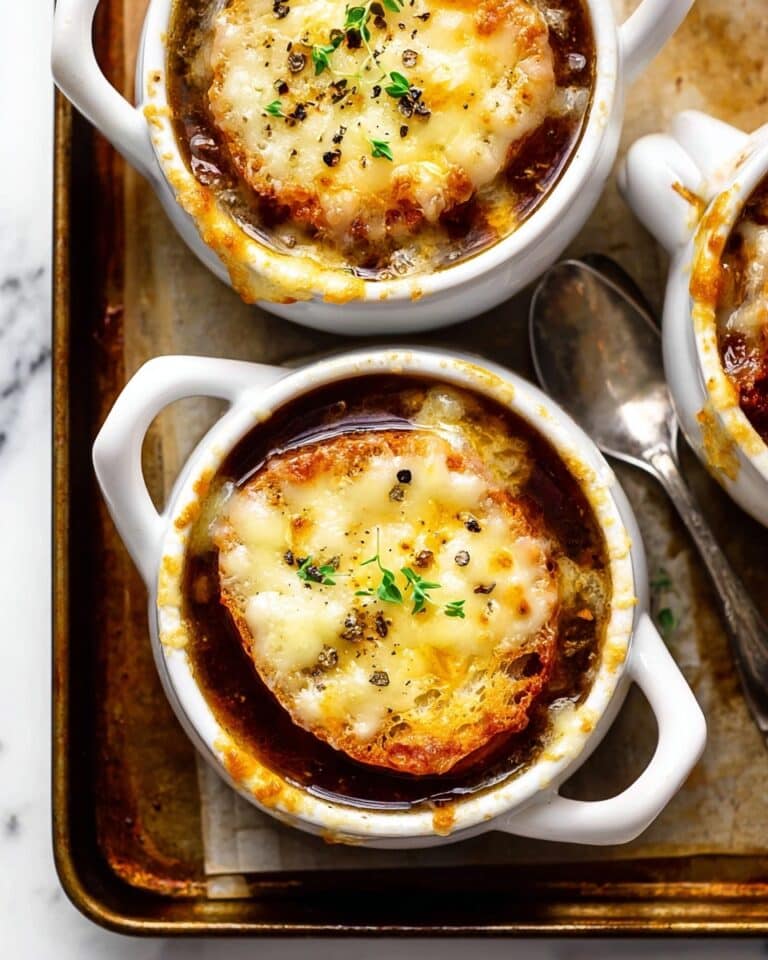I absolutely love how this Roasted Pumpkin Sage Soup Recipe transforms simple autumn ingredients into a velvety, comforting bowl of goodness. When the crisp fall air rolls in, there’s nothing quite like the warm aroma of roasted pumpkin and fragrant sage filling your kitchen. It’s the kind of soup that feels like a cozy hug in a bowl—perfect for chilly nights or casual family dinners.
What makes this recipe really stand out is how roasting the pumpkins deepens the natural sweetness and adds a subtle caramelized note you just don’t get with plain boiled pumpkin. You’ll find that the combination of fresh sage and garlic layers in an earthy, aromatic flavor that makes every spoonful satisfying. Whether you want a wholesome starter or a light main dish, this Roasted Pumpkin Sage Soup Recipe is easy to master and deliciously memorable.
Why You’ll Love This Recipe
- Simple Ingredients: You only need pantry staples and pumpkin to make a flavorful soup that tastes gourmet.
- Comforting & Nutritious: Packed with fiber and vitamins, this soup nourishes your body and soul.
- Versatile Serving Options: Dress it up with garnishes or keep it rustic — both ways work wonders.
- Great for Entertaining: Serve in hollowed pumpkins for impressive presentation that sparks conversation.
Ingredients You’ll Need
Each ingredient in this Roasted Pumpkin Sage Soup Recipe brings something special, from the caramelized sweetness of roasted pumpkins to the earthiness of fresh sage. I always recommend using fresh herbs here – it’s a small touch that really elevates the final flavor.
- Sugar pumpkins or pumpkin pie pumpkins: These smaller pumpkins have tender flesh perfect for roasting and blending.
- Butter (or olive oil for dairy-free): Adds richness; I swap olive oil sometimes for a lighter option that works just as well.
- Shallots: Bring a subtle oniony sweetness, milder than regular onions, which keeps the soup delicate.
- Garlic: Provides depth and warmth; freshly chopped always beats pre-minced.
- Chicken broth (or vegetable stock): Keep it low sodium so you control the seasoning perfectly.
- Fresh sage: Salvage your fall flavors with fresh leaves – dried won’t give the same vibrant taste.
- Salt and pepper: Essential for seasoning so the flavors shine.
- Reduced fat sour cream (optional): Adds a creamy finish if you want a little tang and richness.
Variations
I love how flexible this Roasted Pumpkin Sage Soup Recipe is, so I often tweak it depending on what I have or who I’m serving. You can easily make it vegan or add a bit of heat if you want to experiment.
- Vegan/Dairy-Free Version: Using olive oil in place of butter and vegetable broth keeps it plant-based and just as tasty.
- Spicy Twist: Adding a pinch of cayenne or smoked paprika gives it a subtle kick that my spice-loving friends really enjoy.
- Herb Swap: While sage is classic, I’ve tried adding thyme or rosemary for a different herbal note that’s just as cozy.
- Thicker or Thinner Texture: For a heartier soup, stir in some cooked white beans or grains; to thin it out, simply add more broth before blending.
How to Make Roasted Pumpkin Sage Soup Recipe
Step 1: Roast Your Pumpkins to Perfection
Start by preheating your oven to 400°F – roasting the pumpkin is where the magic begins. Cut the pumpkins in half carefully with a sharp, heavy knife (take your time here!). Scoop out the seeds and save them if you want to roast those later for a crunchy snack. Place the pumpkin halves cut side down on a baking sheet and roast for about 1 to 1-1/2 hours until the flesh is soft and caramelized at the edges. When cool enough to handle, scoop out the sweet, tender flesh; this makes about 5 cups. This slow roasting concentrates the flavors in a way boiling simply doesn’t.
Step 2: Sauté Shallots and Garlic
Melt butter (or heat olive oil for dairy-free) in a large pot over medium heat. Add diced shallots and cook gently until tender and translucent, about 4 minutes. This slow cooking draws out their sweetness without browning them too much. Then add your chopped garlic and cook for just another minute until fragrant – don’t let it burn or it’ll taste bitter.
Step 3: Combine & Simmer
Next, add the roasted pumpkin flesh and chicken or vegetable broth to your pot, along with fresh sage leaves, salt, and pepper. Bring everything to a gentle boil, then reduce heat and simmer covered for about 15 minutes to let the flavors meld beautifully. This step really helps infuse that lovely sage aroma throughout the soup.
Step 4: Blend until Silky Smooth
Once simmered, it’s blending time! Use an immersion blender directly in the pot for convenience, or carefully transfer batches to a blender. Pulse until you get a creamy, silky texture – no lumps here. Be cautious when blending hot soup; vent your blender lid slightly to avoid splashes. When done, taste and adjust seasoning if needed.
Step 5: Garnish and Serve
Serve your soup hot, with an optional dollop of reduced fat sour cream or 0% Greek yogurt and extra fresh sage leaves on top for a fragrant finish. If you’re feeling fancy, try serving it inside hollowed-out small pumpkins—my guests always go nuts over this presentation!
Pro Tips for Making Roasted Pumpkin Sage Soup Recipe
- Roast Until Deeply Caramelized: Don’t rush roasting your pumpkins; deeper caramelization means richer soup flavor.
- Fresh Sage is a Game-Changer: I once used dried sage and the soup felt flat—fresh leaves add brightness and complexity.
- Sauté Shallots Low and Slow: Take your time cooking shallots to unlock their sweet, mellow flavor without browning.
- Avoid Over-Blending: Blend just until smooth to keep your soup luscious without becoming gluey.
How to Serve Roasted Pumpkin Sage Soup Recipe
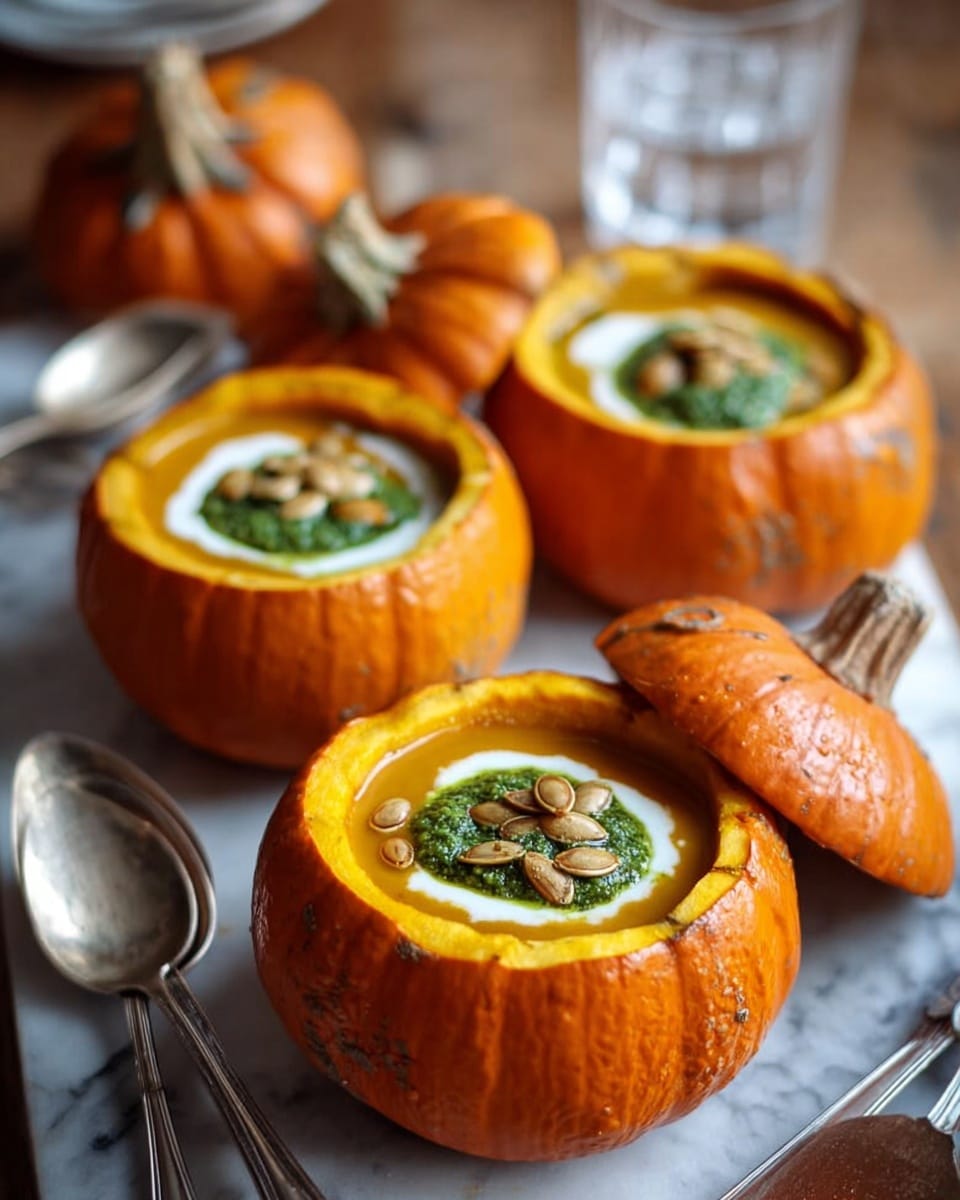
Garnishes
I always top this soup with a swirl of sour cream or Greek yogurt—it adds a lovely tang and creaminess that balances the sweet pumpkin perfectly. Fresh sage leaves crushed gently between your fingers and sprinkled over bring an extra punch of herbaceous fragrance. Sometimes I add toasted pumpkin seeds for crunch, which my family loves.
Side Dishes
This soup pairs beautifully with crusty artisan bread or garlic-roasted baguette slices to soak up every last drop. For a heartier meal, I serve it alongside a fresh, peppery arugula salad or warm quinoa salad. My family and I also enjoy it with a cheesy grilled sandwich for a cozy lunch.
Creative Ways to Present
One of my favorite ways to impress guests is to serve this soup inside mini pumpkins or hollowed-out acorn squashes for a beautiful fall centerpiece. I’ve also ladled it into rustic mugs for casual gatherings or poured it into shot glasses as a savory appetizer at parties. Adding a little herb sprig or a drizzle of smoky olive oil can make it feel special and restaurant-worthy at home.
Make Ahead and Storage
Storing Leftovers
I put leftovers into airtight containers and store them in the fridge; the soup keeps beautifully for up to 4 days. Flavors actually develop more overnight, so it’s great cooked a day in advance if you want to save time. Just give it a good stir before reheating.
Freezing
This Roasted Pumpkin Sage Soup Recipe freezes well in portions. I like to freeze it in freezer-safe containers or even in zip-top bags laid flat for easy stacking. When frozen, it holds its creamy texture and flavor — just thaw overnight in the fridge before reheating.
Reheating
To reheat, warm the soup gently on the stove over low heat, stirring often to prevent scorching. If it seems too thick, add a splash of broth, water, or milk to loosen it up. Microwave works too, just heat in short bursts with stirring in between. Avoid boiling—it can alter the silky texture.
FAQs
-
Can I use canned pumpkin instead of roasting fresh pumpkins?
While canned pumpkin purée is convenient, roasting fresh pumpkins adds a richer, sweeter depth that’s hard to replicate. If you use canned, choose pure pumpkin (not pumpkin pie mix) and consider adding a little caramelizing step with the shallots to boost flavor.
-
Is this soup gluten-free and suitable for Whole30?
Yes! This Roasted Pumpkin Sage Soup Recipe is naturally gluten-free if you use gluten-free broth. For Whole30 compliance, swap butter with olive oil and use compliant chicken broth.
-
How do I prevent the soup from being watery?
If your soup tastes watery, reduce the amount of broth slightly or simmer uncovered for a few extra minutes to concentrate flavors. Using roasted pumpkin rather than boiling helps avoid excess water as well.
-
Can I prep this soup in advance for a party?
Absolutely! I often roast pumpkin and prep the sautéed shallots and garlic a day ahead, then finish simmering and blending the day of your event. This makes hosting easier and the soup tastes just as fresh.
Final Thoughts
This Roasted Pumpkin Sage Soup Recipe has become one of my go-to dishes whenever fall arrives because it feels comforting yet elegant. I hope you enjoy making it as much as I do — it’s straightforward, forgiving, and just downright delicious. Give it a try for your next cozy meal, and don’t be surprised if it becomes a family favorite that you reach for year after year!
Print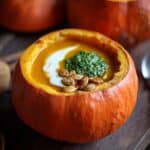
Roasted Pumpkin Sage Soup Recipe
- Prep Time: 5 minutes
- Cook Time: 1 hour 40 minutes
- Total Time: 1 hour 45 minutes
- Yield: 5 servings
- Category: Soup
- Method: Roasting
- Cuisine: American
- Diet: Low Fat
Description
This Roasted Pumpkin Sage Soup is a creamy, comforting dish perfect for fall. Roasting the pumpkins brings out their natural sweetness while the fresh sage adds a fragrant, earthy flavor. Topped with a dollop of reduced fat sour cream or Greek yogurt, this soup is both healthy and delicious, making it an ideal first course or light meal.
Ingredients
Pumpkin and Roasting
- 2 medium sugar pumpkins or pumpkin pie pumpkins (about 6 lbs total)
Sauté and Soup Base
- 1 tbsp butter (or olive oil for dairy-free/Whole30)
- 3/4 cup shallots, diced
- 3 cloves garlic, chopped
Liquids and Seasonings
- 4 cups fat-free, low sodium chicken broth (or vegetable stock for vegetarians)
- 1 tbsp fresh sage (plus more for garnish)
- Salt and fresh pepper, to taste
Garnish (optional)
- Reduced fat sour cream or 0% Greek yogurt
Instructions
- Preheat and Prepare Pumpkin: Heat the oven to 400°F. Using a heavy, sharp knife, carefully cut the pumpkins in half. Scoop out the seeds and place them on a baking sheet for roasting.
- Roast Pumpkin and Seeds: Place the pumpkin halves cut-side down on a baking sheet. Roast the pumpkins and seeds for 1 to 1½ hours, until the pumpkin flesh is soft and easily pierced with a fork.
- Cool and Scoop Pumpkin Flesh: Remove the pumpkins from the oven and let them cool enough to handle safely. Use a spoon to scoop out the soft flesh from the pumpkin shells; this should yield about 5 cups of flesh.
- Sauté Aromatics: In a large pot or Dutch oven over medium heat, melt the butter or heat the olive oil. Add the diced shallots and sauté until tender and translucent, about 4 minutes. Add the chopped garlic and cook for an additional minute until fragrant.
- Combine Ingredients and Simmer: Add the roasted pumpkin flesh and the chicken broth (or vegetable stock) to the pot. Stir in the fresh sage, and season with salt and fresh pepper to taste. Bring the mixture to a boil, then reduce to a simmer, cover, and cook for about 15 minutes to allow flavors to meld.
- Blend Soup to Smooth Consistency: Using an immersion blender or transferring the mixture carefully to a countertop blender, blend the soup until smooth and creamy.
- Serve and Garnish: Ladle the soup into bowls and garnish optionally with a dollop of reduced fat sour cream or 0% Greek yogurt and a sprinkling of fresh sage leaves for a beautiful presentation.
Notes
- Pumpkin season is at its peak during fall, making this soup a seasonal favorite that warms and comforts.
- Using hollowed-out roasted pumpkins as serving bowls creates an impressive and festive presentation.
- The soup is easily adapted for vegetarians by substituting chicken broth for vegetable stock.
- For a dairy-free or Whole30 version, replace butter with olive oil and omit sour cream garnish.
Nutrition
- Serving Size: 1 and 3/4 cups
- Calories: 138 kcal
- Sugar: 9 g
- Sodium: 459 mg
- Fat: 3 g
- Saturated Fat: 1.5 g
- Unsaturated Fat: 1.3 g
- Trans Fat: 0 g
- Carbohydrates: 25 g
- Fiber: 7 g
- Protein: 6 g
- Cholesterol: 6 mg

